Ever found yourself with a massive amount of leftover rice but unsure how to keep it fresh and tasty for the next meal? Fret not, for we have got you covered! This guide will walk you through the ins and outs of preserving cooked rice so that you can enjoy it just as much the second time around.
So, let’s dive into the world of rice storage and learn how to keep cooked rice fresh.
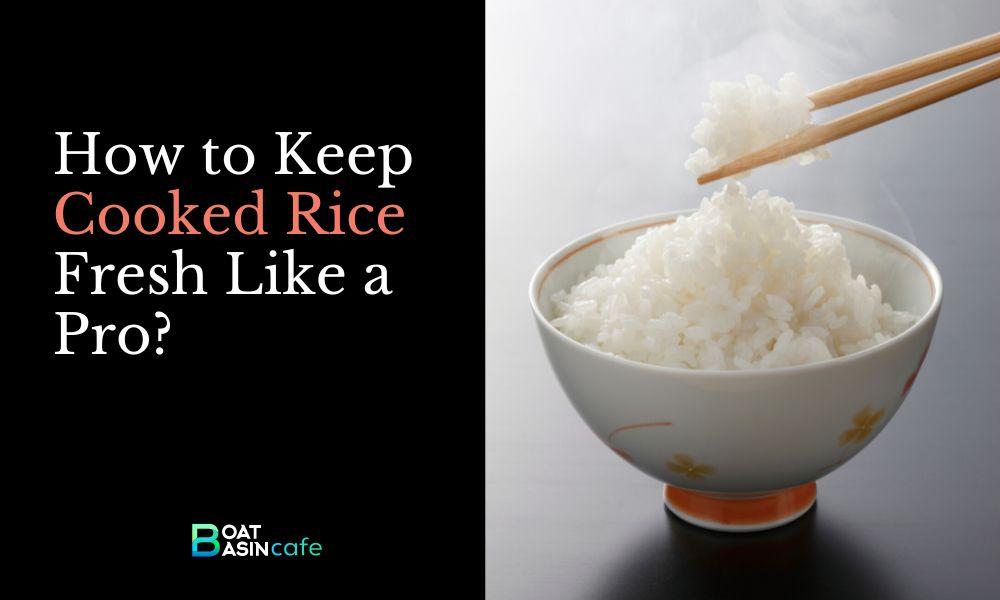
Cooking Rice for Optimal Freshness
Rinse and soak
To maintain freshness, start by rinsing and soaking your rice to remove excess starch, which can make the cooked rice stickier and less fresh.
Cooking methods and their impact on freshness
Different cooking methods, such as boiling, steaming, and using a rice cooker, can affect the freshness of cooked rice. Experiment with different techniques to find the one that yields the freshest results for your preferred rice variety.
| Cooking Method | Impact on Freshness | Texture |
|---|---|---|
| Boiling | May become waterlogged; can affect freshness | Potentially uneven |
| Steaming | Retains freshness longer | Fluffy |
| Rice Cooker | Consistent results; maintains freshness | Even and moist |
| Pressure Cooking | Locks in moisture and flavor; fresh | Soft and moist |
| Baking | Drier texture helps maintain freshness | Drier |
The role of water-to-rice ratio
Using the correct water-to-rice ratio is essential for achieving perfectly cooked rice and maintaining its freshness. The ideal ratio may vary depending on the type of rice and cooking method. Refer to package instructions or follow our guide for optimal results.
The Cooling Process
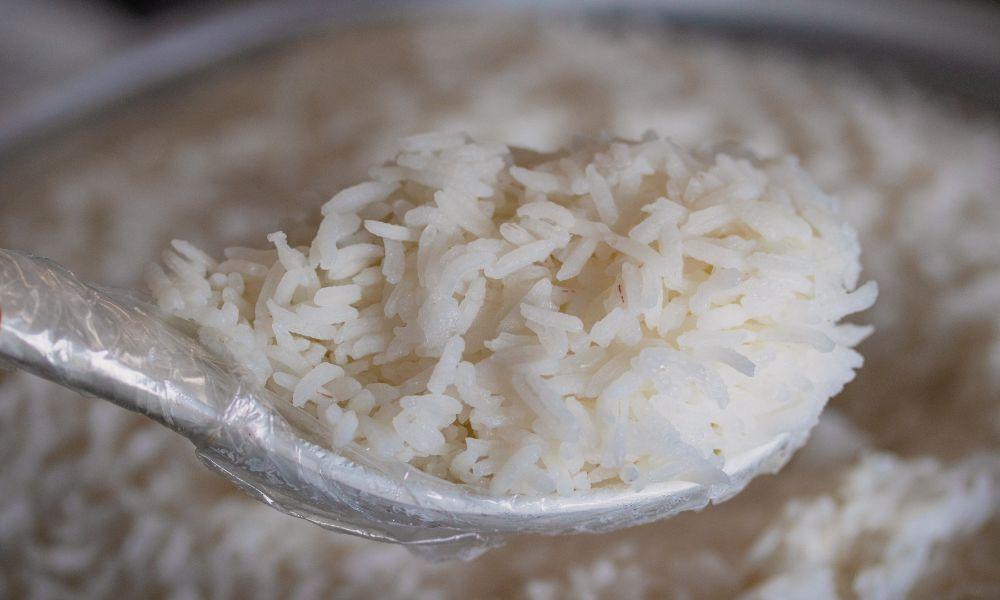
Safe cooling methods
Once the rice is cooked, spread it out on a flat surface or tray, allowing it to cool quickly and evenly. This helps prevent the growth of bacteria and ensures the rice remains fresh.
The importance of proper cooling for freshness
Cooling rice properly is essential for maintaining its freshness and preventing spoilage. Rapid cooling prevents bacteria growth, which can cause foodborne illnesses.
Timeframe for cooling cooked rice
Allow cooked rice to cool at room temperature for no more than one hour before transferring it to the refrigerator or freezer.
Effective Storage Techniques
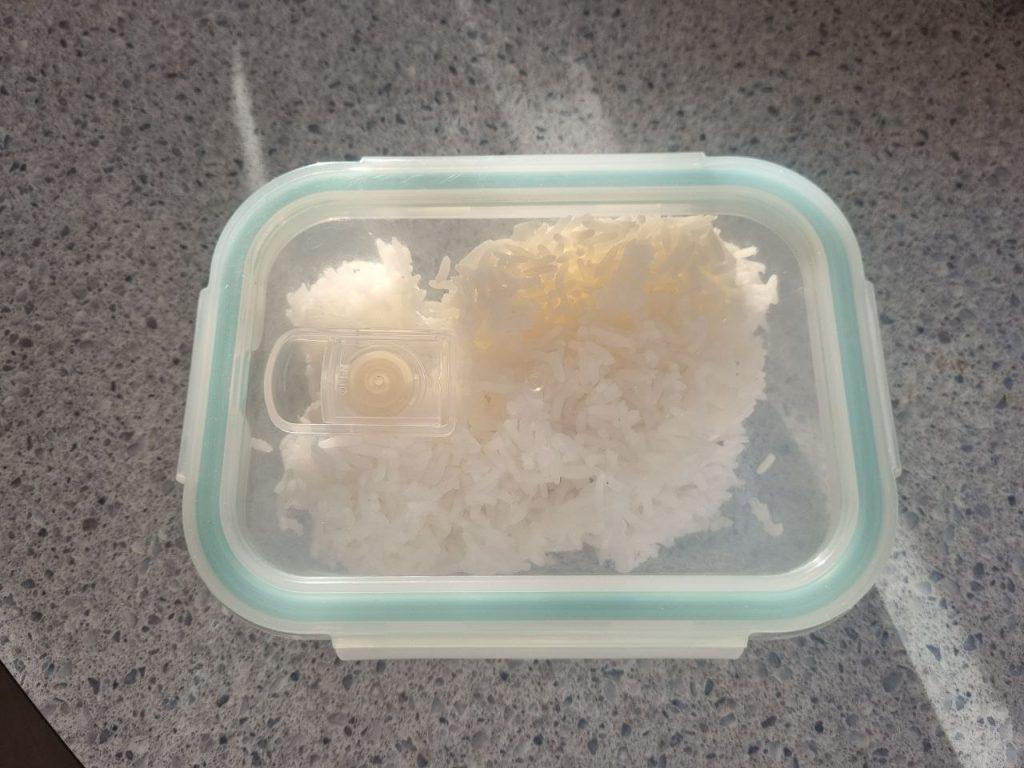
Airtight containers
Using airtight containers, such as glass or plastic, is crucial for keeping cooked rice fresh. These containers prevent the rice from absorbing odors from other foods and protect it from drying out or becoming contaminated.
Vacuum sealing
Another effective storage method is vacuum sealing, which removes air from the container, helping to preserve the rice’s freshness and extend its shelf life.
Proper storage temperature
Whether you’re refrigerating or freezing cooked rice, ensure that your storage unit maintains a consistent temperature to prevent spoilage and maintain freshness.
Refrigeration Tips
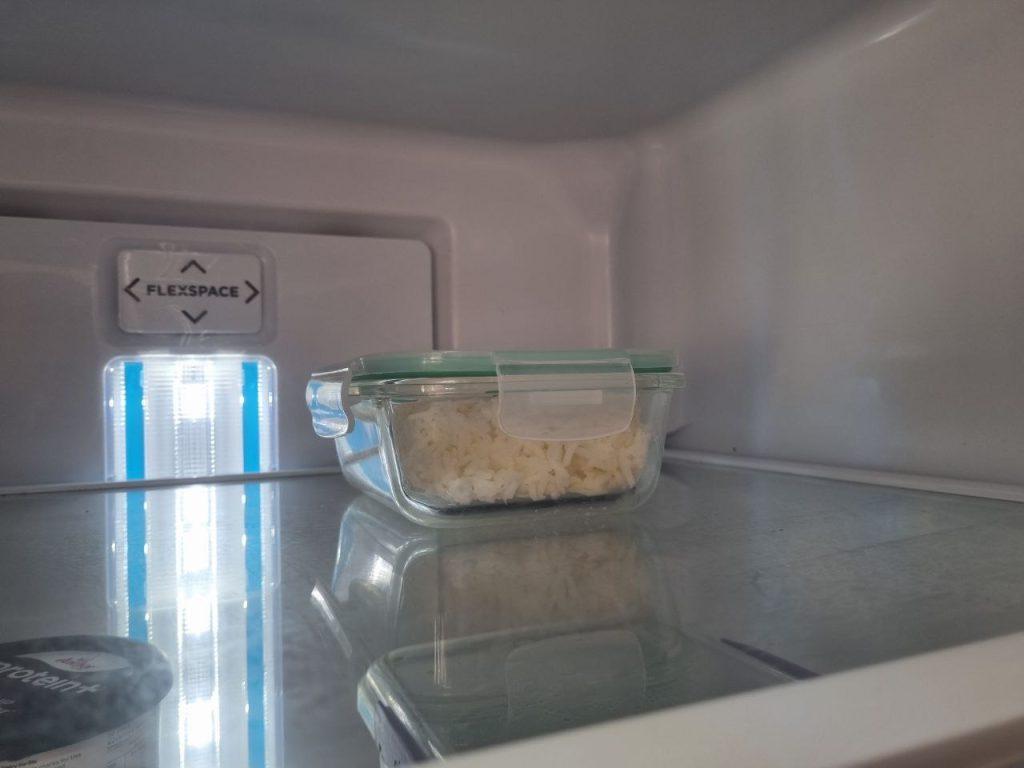
Storing rice separately from other foods
Keep cooked rice in a separate container, away from raw or strong-smelling foods, to prevent contamination and maintain its freshness.
Optimal fridge temperature for rice
Store cooked rice in a refrigerator set to 40°F (4°C) or below to ensure it remains fresh and safe to eat. A consistent temperature helps prevent the growth of bacteria that can cause spoilage.
Shelf life of cooked rice in the refrigerator
Cooked rice typically lasts 4-6 days in the refrigerator. However, the exact shelf life may vary depending on the type of rice, storage conditions, and other factors.
Freezing Cooked Rice
Freezing techniques for maintaining freshness
Freezing cooked rice is an excellent way to preserve its freshness for longer periods. Portion the rice into airtight containers or freezer bags, and remove as much air as possible before sealing. Label the containers with the date to keep track of the storage time.
Proper defrosting methods
When you’re ready to use the frozen rice, defrost it in the refrigerator or by using the microwave’s defrost setting. Avoid thawing rice at room temperature, as it can encourage bacterial growth.
Shelf life of frozen cooked rice
Frozen cooked rice can last up to three months in the freezer without significant loss of quality. However, it’s essential to follow proper freezing and defrosting guidelines to ensure optimal freshness.
Reheating Cooked Rice for Freshness
| Reheating Method | Time Needed | Impact on Rice Texture & Quality |
|---|---|---|
| Microwave | 1-3 minutes | Quick and convenient; may dry out if overcooked |
| Stovetop | 5-7 minutes | Even heating; requires stirring; may dry out if not enough water added |
| Steamer | 10-15 minutes | Gentle reheating; maintains moisture; requires longer time |
Microwave
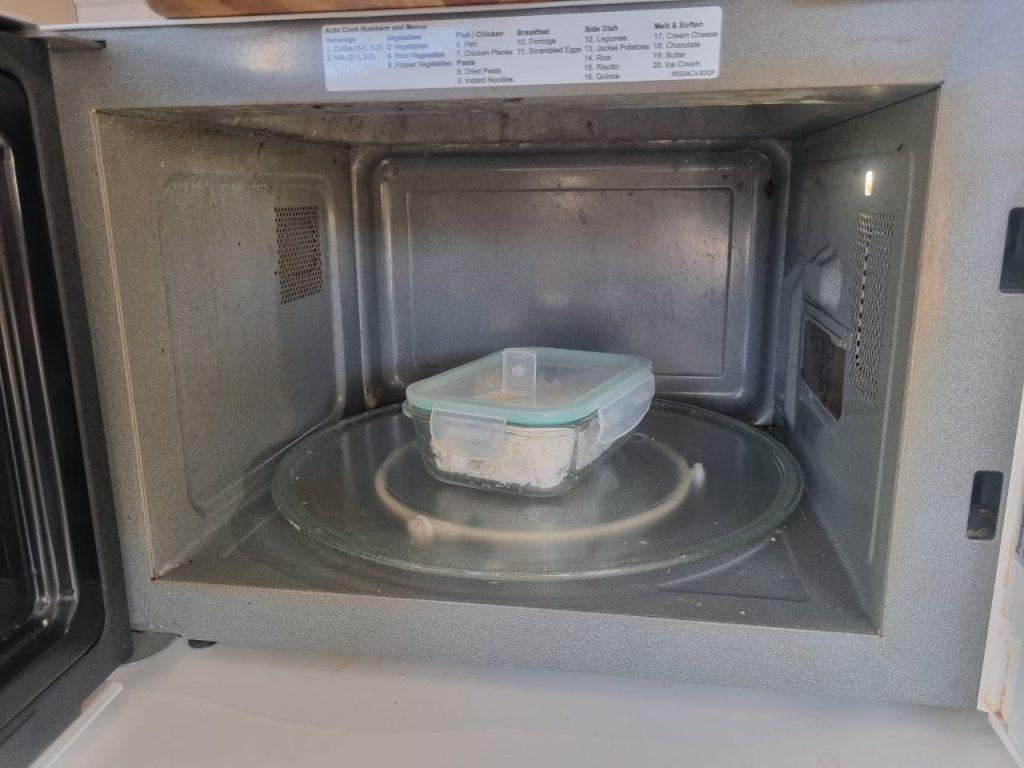
Time Needed: 1-3 minutes
Impact on Rice Texture & Quality: The microwave is a quick and convenient method for reheating rice. However, if the rice is overcooked, it can become dry. To avoid this issue, consider adding a splash of water and covering the rice with a microwave-safe lid or plastic wrap to retain moisture.
Stovetop
Time Needed: 5-7 minutes
Impact on Rice Texture & Quality: Reheating rice on the stovetop provides even heating and allows for better control over the process. It requires stirring to prevent the rice from sticking to the pan or burning. If the rice appears dry, add a small amount of water to maintain moisture. Overcooking or not adding enough water can result in dry rice.
Steamer
Time Needed: 10-15 minutes
Impact on Rice Texture & Quality: Using a steamer is a gentle method for reheating cooked rice, which helps maintain its moisture and texture. However, this method takes longer compared to microwaving or using the stovetop. Place the rice in a heatproof dish and steam it over boiling water until heated through.
Tips for retaining texture and flavor
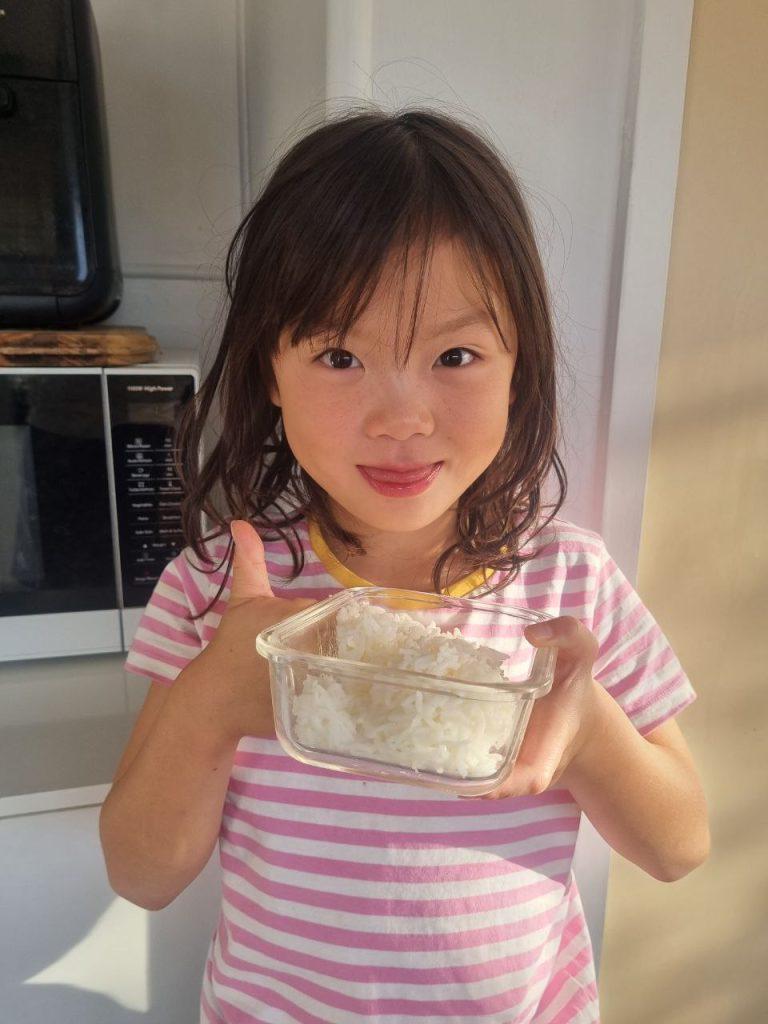
As someone who has experimented with various methods for retaining texture and flavor when reheating cooked rice, I’ve discovered several helpful tips and tricks that can make a big difference. Here are my personal recommendations:
- Adding moisture: If the rice appears dry, sprinkle a small amount of water, broth, or even a few drops of oil over the rice before reheating. This added moisture will help steam the rice and restore its original texture.
- Layering technique: When reheating a large quantity of rice, consider spreading it out in a thin layer in a wide, shallow dish. This will ensure more even heating and prevent the rice from becoming too dry or mushy.
- Fluffing the rice: Gently fluff the rice with a fork after reheating to separate the grains and restore the original texture.
- Incorporating flavors: If you’re reheating rice to serve with a specific dish, consider adding a touch of the dish’s sauce, seasoning, or herbs to the rice before reheating. This will not only maintain the rice’s freshness but also enhance its flavor.
- Combining methods: Sometimes, combining different reheating methods can yield the best results. For example, you might start by reheating rice in the microwave for a minute or two, then transferring it to a pan on the stovetop to finish heating and add any desired flavors.
- Reheating in a rice cooker: If you own a rice cooker with a “keep warm” function, you can also use it to reheat rice. Simply place the rice in the rice cooker, add a splash of water, and set the appliance to the “keep warm” setting. The rice cooker will gently reheat the rice without overcooking it, helping to retain its texture and flavor.
- Consider the rice variety: Different types of rice have distinct textures and flavors, so be mindful of the specific variety you’re working with when reheating. For example, jasmine and basmati rice can become dry and brittle if overcooked, while short-grain rice can become sticky and clumpy. Adjust your reheating method and cooking time accordingly to maintain the rice’s unique characteristics.
Signs of Spoilage
Appearance
Spoiled rice may appear discolored, slimy, or moldy. If you notice any of these signs, it’s best to discard the rice.
Smell
Cooked rice that has gone bad will often emit a sour or musty odor. If the rice smells off, it’s likely no longer safe to eat.
Taste
Spoiled rice may taste sour or bitter. If you suspect the rice has gone bad, do not taste it, as consuming spoiled rice can cause foodborne illnesses.
Safety Guidelines
Foodborne illnesses related to rice
Bacillus cereus, a bacterium commonly found in rice, can cause foodborne illnesses if the rice is not stored and handled correctly. Proper storage and reheating techniques can help minimize the risk of such illnesses.
Discarding spoiled rice
If you suspect your rice is spoiled, discard it immediately to avoid potential health risks.
Creative Ways to Use Stored Rice
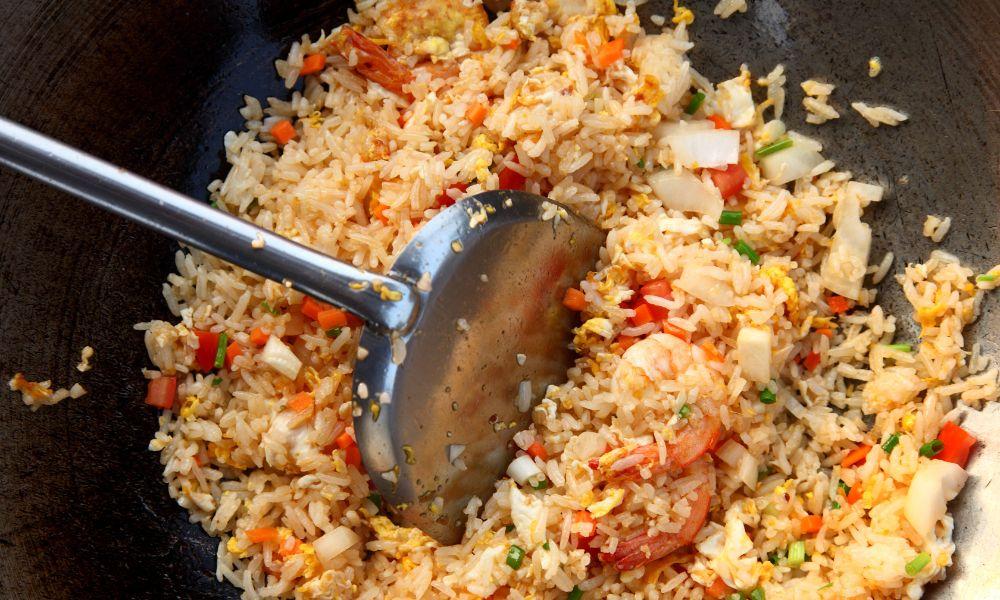
Dishes that maintain or enhance freshness
Stored rice can be used in various dishes that maintain or enhance its freshness, such as fried rice, casseroles, and rice salads. These dishes often involve additional ingredients and cooking methods that help restore the rice’s texture and flavor.
Recipes perfect for leftover rice
Leftover rice is ideal for dishes like fried rice, rice pudding, and rice-based soups or stews. Using stored rice in these recipes is not only a great way to minimize waste but also allows you to create delicious meals with minimal effort.
Common Mistakes to Avoid
Storing rice too early
Allowing cooked rice to cool properly before storing it is crucial for maintaining freshness. Storing rice while it’s still hot can create a breeding ground for bacteria, leading to spoilage and potential health risks.
Improper storage temperature
Ensure that your refrigerator and freezer maintain consistent temperatures to prevent fluctuations that can contribute to spoilage and decrease the rice’s freshness.
Insufficiently sealed containers
Using airtight containers or vacuum-sealed bags is essential for keeping cooked rice fresh. Insufficiently sealed containers can expose the rice to air, odors, and bacteria, which can cause spoilage and negatively impact its freshness.
Summary
Keeping cooked rice fresh is a combination of proper cooking, cooling, storage, and reheating techniques. By following the guidelines outlined in this guide, you can ensure that your rice remains safe to eat, maintains its texture and flavor, and lasts as long as possible.
Whether you’re using leftover rice for rice pudding or wondering how long sushi rice lasts, understanding how to keep cooked rice fresh is an essential skill for any home cook or professional chef.
FAQs
How long does cooked rice last in the refrigerator?
Cooked rice typically lasts for 4-6 days in the refrigerator when stored in an airtight container. However, it’s crucial to store it properly and ensure it cools completely before refrigeration to maximize its freshness and shelf life.
Can you freeze cooked rice?
Yes, you can freeze cooked rice. Properly stored in airtight containers or vacuum-sealed bags, frozen rice can last up to 3 months in the freezer. When you’re ready to use it, simply thaw the rice and reheat it using your preferred method.
What is the best way to reheat cooked rice?
The best way to reheat cooked rice depends on your preferences and available equipment. The microwave, stovetop, and steamer are all suitable options. The key is to avoid overcooking and ensure the rice has enough moisture during the reheating process to maintain its texture and flavor.
How can I tell if cooked rice has gone bad?
Signs of spoilage in cooked rice include an off smell, mold or discoloration, and a slimy or mushy texture. If you notice any of these signs, it’s best to discard the rice immediately.
Can I use leftover rice for other dishes?
Absolutely! Leftover rice can be repurposed in various dishes, such as fried rice, rice pudding, and rice-based soups or stews. Using stored rice in these recipes is a great way to minimize waste and create delicious meals with minimal effort.
What are the food safety concerns with storing cooked rice?
Cooked rice can be a breeding ground for bacteria, such as Bacillus cereus, which can cause foodborne illness. To minimize the risk of food poisoning, ensure that you store cooked rice properly by allowing it to cool completely before refrigeration, using airtight containers, and reheating the rice to at least 165°F (74°C) before consuming.
Can I reheat rice more than once?
It’s generally not recommended to reheat rice multiple times, as it increases the risk of bacterial growth and potential foodborne illness. To minimize waste and ensure safety, only reheat the amount of rice you plan to consume immediately.